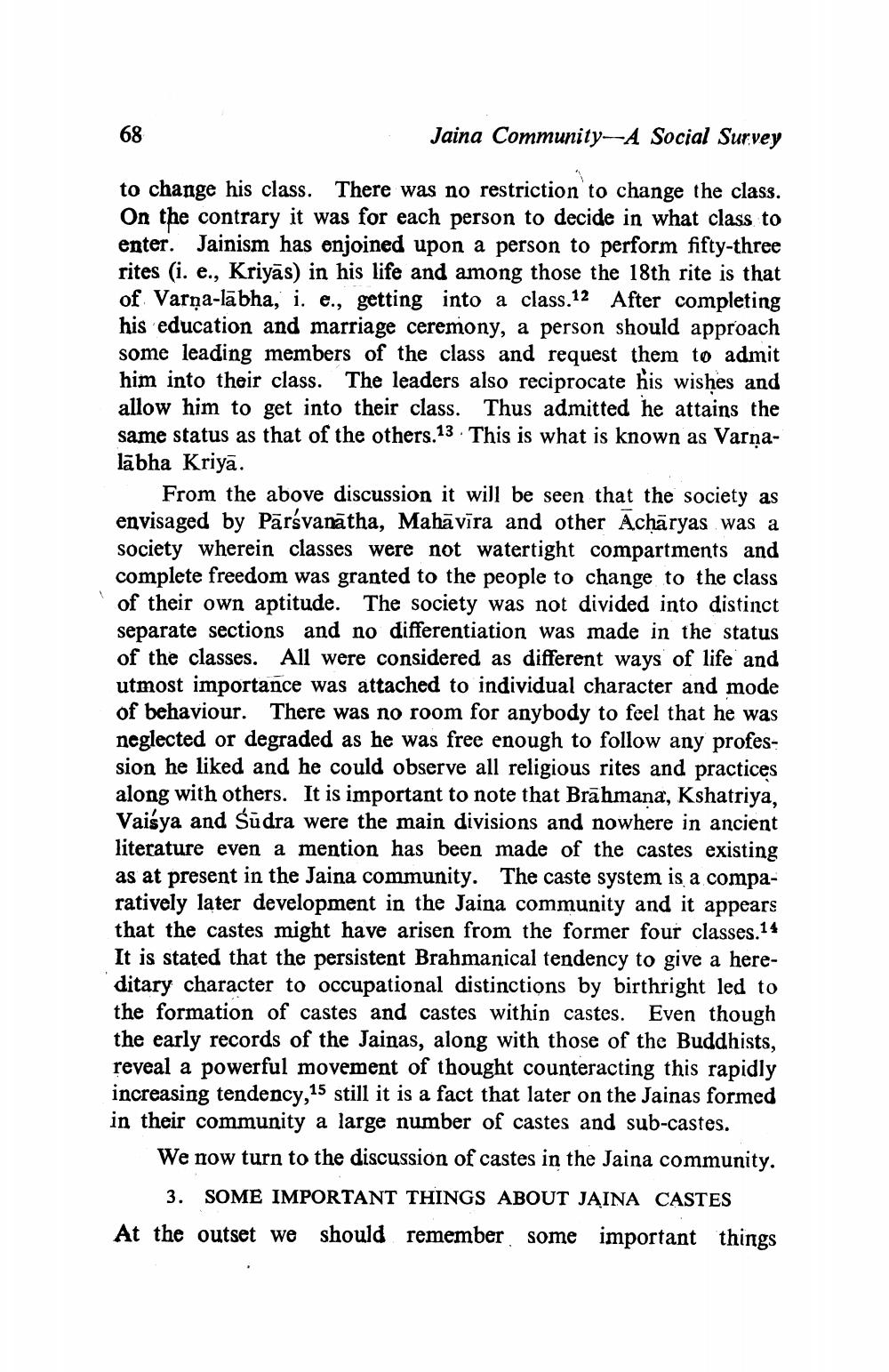________________
Jaina Community-A Social Survey
to change his class. There was no restriction to change the class. On the contrary it was for each person to decide in what class to enter. Jainism has enjoined upon a person to perform fifty-three rites (i. e., Kriyās) in his life and among those the 18th rite is that of Varņa-lābha, i. e., getting into a class.12 After completing his education and marriage ceremony, a person should approach some leading members of the class and request them to admit him into their class. The leaders also reciprocate his wishes and allow him to get into their class. Thus admitted he attains the same status as that of the others. 13 . This is what is known as Varnalābha Kriya.
From the above discussion it will be seen that the society as envisaged by Pārsvanātha, Mahāvīra and other Achāryas was a society wherein classes were not watertight compartments and complete freedom was granted to the people to change to the class of their own aptitude. The society was not divided into distinct separate sections and no differentiation was made in the status of the classes. All were considered as different ways of life and utmost importance was attached to individual character and mode of behaviour. There was no room for anybody to feel that he was neglected or degraded as he was free enough to follow any profession he liked and he could observe all religious rites and practices along with others. It is important to note that Brahmana, Kshatriya, Vaisya and Sudra were the main divisions and nowhere in ancient literature even a mention has been made of the castes existing as at present in the Jaina community. The caste system is a comparatively later development in the Jaina community and it appears that the castes might have arisen from the former four classes.14 It is stated that the persistent Brahmanical tendency to give a hereditary character to occupational distinctions by birthright led to the formation of castes and castes within castes. Even though the early records of the Jainas, along with those of the Buddhists, reveal a powerful movement of thought counteracting this rapidly increasing tendency,15 still it is a fact that later on the Jainas formed in their community a large number of castes and sub-castes.
We now turn to the discussion of castes in the Jaina community.
3. SOME IMPORTANT THINGS ABOUT JAINA CASTES At the outset we should remember some important things




